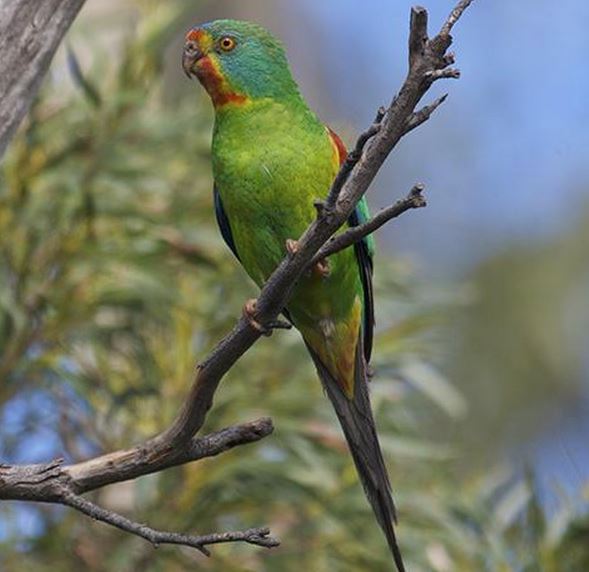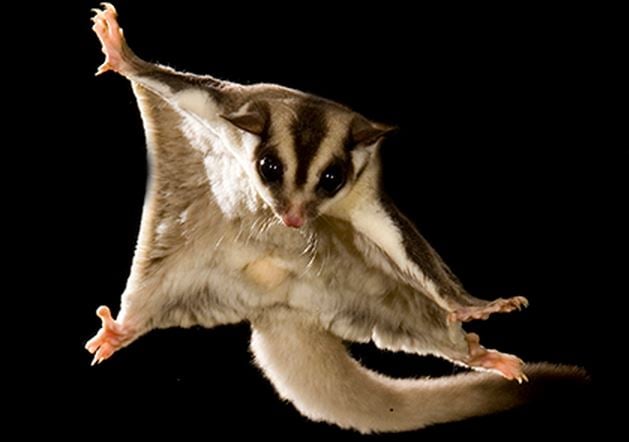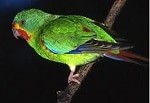The Swift Parrot (Lathamus discolor), which breeds in Tasmania and migrates to south eastern Australia in the winter, is facing such a devastating population collapse that it risks becoming the next Dodo, zoologists say.
Scientists from the Australian National University (ANU) warn that the iconic Tasmanian Swift Parrot could be gone within the next 16 years.
After carrying out a study, Professor Robert Heinsohn and colleagues are urging the Federal Government to list the birds as critically endangered. If the Environment Department in Canberra decides to class the red-faced, luminous green bird as critically endangered, it will join nine other Australian birds with that classification.

There are fewer than 2,000 Swift Parrots left, and their population is declining rapidly. (Image: ANU)
Prof. Heinsohn said:
“Swift parrots are in far worse trouble than anybody previously thought. Everyone, including foresters, environmentalists and members of the public will be severely affected if they go extinct.”
Swift parrots, Australia’s fastest nectar-eaters, are key pollinators of blue and black bum trees, which are vital to the forestry industry. Ironically, the industry continues logging swift parrot habitat, the researchers wrote in academic journal Biological Conservation (citation below).
During their five-year study, the researchers discovered that the bird moves between different areas of Tasmania each year to breed, depending where food is available.
Preyed on by Sugar Gliders
According to data from the study and a previous one, Swift Parrot populations are suffering partly because of Sugar Gliders, which prey on them, especially in deforested areas.
The Sugar Glider is an omnivorous nocturnal gliding possum that lives in trees. Experts believe the predator was introduced to Tasmania nearly one hundred years ago.
The sugar glider is small enough to get into swift parrot nest holes in gum trees. The researchers collected evidence showing that it eats eggs, fledglings and sometimes even brooding adult birds. “The gliders go for pretty much anything they can find,” Dr Stojanovic said.

Sugar Gliders are eating Swift Parrots eggs, juveniles and even brooding adults.
The scientists forecast that the birds’ population will go down by 50% every four years, which means that in 16 years’ time their numbers will have declined by 94.7%. There aren’t that many of them now – probably fewer than 2,000.
Co-researcher Dr Dejan Stojanovic, who works at the ANU Fenner School, believes there should be a moratorium on logging in swift parrot habitat until new plans for their protection can be put in place.
Dr. Stojanovic said:
“Current approaches to swift parrot management look rather inadequate. Our models are a wake-up call. Actions to preserve their forest habitat cannot wait.”
Tasmanian Government approves logging Swift Parrot habitat
BirdLife Australia reported that the Tasmanian Government ignored expert advice and approved logging at the Swift Parrot’s habitat.
Dr Eric Woehler, convenor of BirdLife Australia’s Tasmania Branch, said:
“The Department sought specialist expert advice regarding 5 proposed logging coupes within an identified Swift Parrot Important Breeding Area. The RTI reveals that the expert advice warned that logging in the 5 proposed coupes would result in the loss of critical breeding habitat and interfere with the recovery of the species.”
“Despite the advice, the Department has approved logging in 3 of the 5 coupes for which information was provided.”
“We rely on our governments to look after the interests of our threatened species. This information demonstrates a breach of faith with the public, who have trusted the government to protect the habitat of this iconic and endangered species.”
BirdLife Australia says there should be an inquiry into why logging was approved for crucial Swift Parrot habitat, despite specialist expert advice against it.
Dr Woehler added:
“We are also recommending that logging in Swift Parrot Important Breeding Areas be halted until we can be certain that important nesting and foraging habitat is protected.”
Citation: “A severe predator-induced population decline predicted for endangered, migratory swift parrots (Lathamus discolor),” Robert Heinsohn, Matthew Webb, Robert Lacy, Aleks Terauds, Rachael Alderman and Dejan Stojanovic. Biological Conservation, Volume 186, June 2015, Pages 75-82.
Video – Swift Parrot Survival Threat

